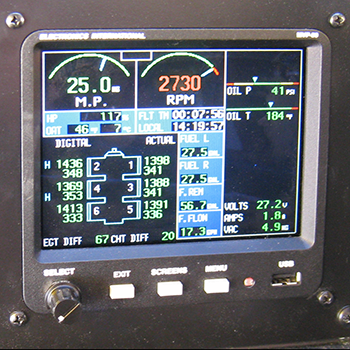Subscriber question:
"I’m reviewing for my first checkout with a constant-speed propeller. I read the emergency checklist for a propeller overspeed and I’m confused. Is this really an emergency, or just an inconvenience?" —Tom C.
Tom:
 “A propeller overspeed occurs when engine RPM exceeds redline. This can overstress the propeller blades and hub resulting in failures that can break the propeller apart. In extreme cases, the vibration has ripped engines clean off the airframe, which alters the airplane’s center of gravity to the point the airplane is uncontrollable.
“A propeller overspeed occurs when engine RPM exceeds redline. This can overstress the propeller blades and hub resulting in failures that can break the propeller apart. In extreme cases, the vibration has ripped engines clean off the airframe, which alters the airplane’s center of gravity to the point the airplane is uncontrollable.
So: Yes, a propeller overspeed is an emergency.
Just as a review: Controlling the pitch of the propeller allows the pilot to keep RPM below redline even at higher power settings. It’s somewhat analogous to shifting to a higher gear in a car to go faster without the engine turning faster.
Most controllable-pitch propellers accomplish pitch change using oil pressure in the propeller dome. Single-engine airplanes usually increase engine oil pressure in the dome to reduce RPM, and decrease pressure to increase RPM. The logic is that if oil pressure drops from an engine problem, the propeller moves to maximize RPM, which maximizes the remaining engine power. (Twin-engine airplanes are set up differently, but I’m assuming you’re checking out in a single.)
If oil pressure decreases significantly but there is still sufficient engine power, the propeller can go several hundred RPM above redline. That’s just one failure scenario. There are others, which is why most airplanes’ Propeller Overspeed emergency checklist calls for:
- Reducing throttle: to get the engine below the prop governing range and perhaps decrease RPM,
- Pitching up slightly: to reduce indicated airspeed and the air load that is driving the propeller faster, and then
- Checking oil pressure: because propeller overspeed may be your first indication of catastrophic engine oil loss.
One last thing: the hazard of propeller overspeed is not limited to controllable-pitch propellers. A fixed-pitch prop can overspeed in a dive if the throttle is too far forward.
Watch your propeller speed in any airplane you fly.”
Have you ever had an engine-related emergency?
